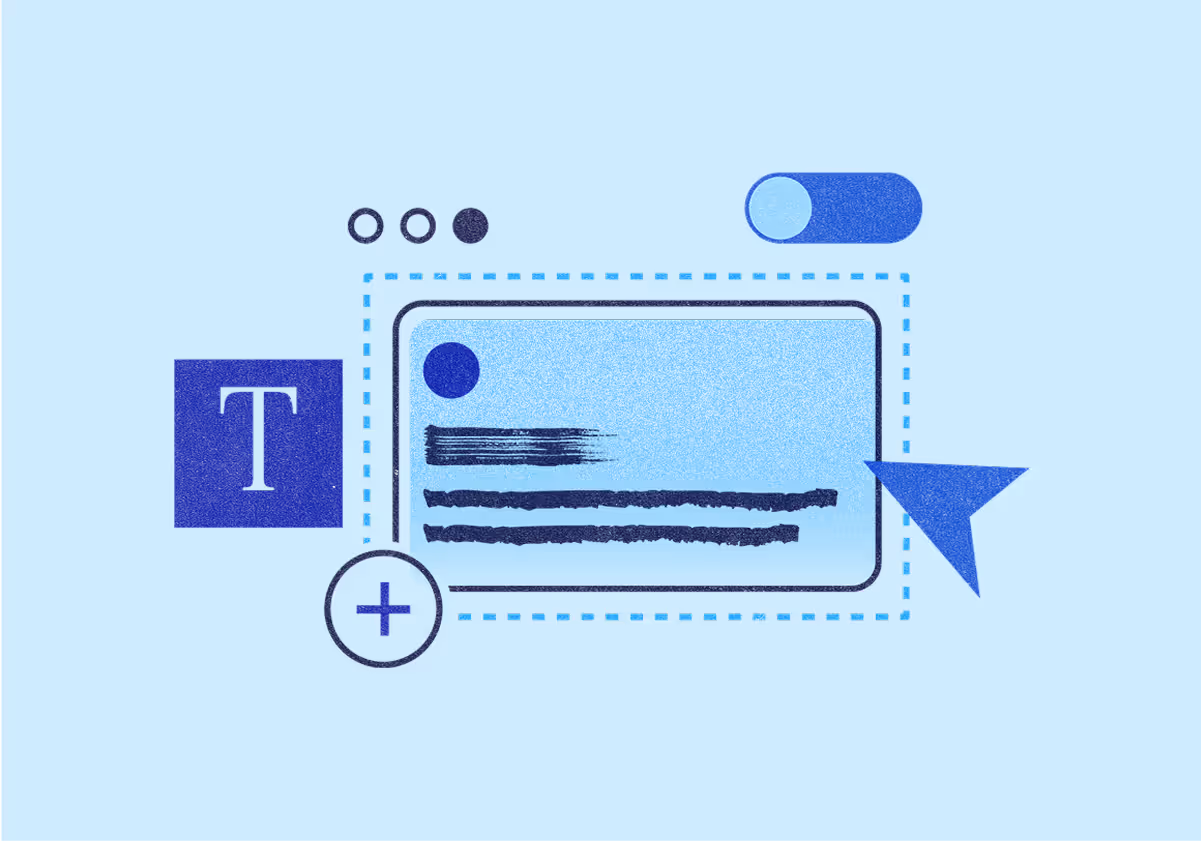Dave Rogenmoser
December 12, 2021
Why Email Marketing Still Rules and How to Do It Effectively
Email marketing is NOT dead and we have the stats to prove it. We also share 6 steps to get started and generate results from marketing emails!

Email is one of the most popular forms of digital communication with more than 50% of the world’s population—over 4 billion people—using it. And it’s not just for communication between friends and family. It has incredible potential for email marketing (sending commercial messages to contacts who’ve signed up for your email list and are interested in your products, services or brand).
Have you purchased a new product, signed up for an event or taken another action after receiving a marketing email? If so, you’ve seen the effectiveness of commercial emails firsthand. But, on a wider scale, is email marketing worth investing in and, if so, what does it take to get results? Let’s find out.
Is email marketing still important in 2022?
“Email is dead.” Every so often, you’ll hear this claim from someone who hasn’t been able to gain or maintain traction. But that shouldn’t deter you from adding email marketing to your strategy since the stats tell a different story.
For example, in 2020, 78% percent of marketers agreed that email is important not just for reaching marketing goals but for overall company success. Why? One reason is the return on investment (ROI). One study found that for every $1 spent, marketers make $42, which is a 4200% ROI! Clearly, email marketing can work...but not without equal parts strategy and know-how. Here’s how to make it work for you (without being forced to pay for pro email marketing services if you're not ready for that).
Step 1: Develop a thoughtful, goal-oriented email marketing strategy
Without a goal, a marketing strategy is useless. And without a marketing strategy, a goal is just a wish. So you need to define:
- Who you want to reach. Who is your target audience? To fill your email list with the right kind of subscribers and effectively nurture their interest in your company or brand, you have to have a clear answer to that question.
- Your primary signup sources. How will you reach your target audience to grow your list (e.g. via your website, social media profiles or online store)? Also, give thought to how different signup sources may impact what kind of content an email subscriber will be most likely to engage with.
- Your big-picture goal. The most common goal of email marketing is to nurture qualified leads and guide them towards making purchases. But you may have other goals too, such as increasing brand awareness through word-of-mouth, increasing customer loyalty and lifetime value or building a community.
- What frequency and schedule will get you to your goal. With your target outcome in mind, decide how often you’ll send emails to your subscribers and what types of content you’ll send.
Speaking of types of email content, what are your options?
Common types of email marketing campaigns
Here are 4 of the many types of email campaigns you can run.
Event Promos
Doing a webinar? Hosting a workshop? Setting up a booth at an industry event? No matter the event, email can be an effective way to spread the word, get your audience to show up, and forge stronger bonds with them as a result.

Special Offer Announcements
Who doesn’t love a special offer or sale? While advertising such offers on your website or social media accounts can be helpful to generate interest and sales, they generally only reach a limited portion of your audience. When combined with email, which reaches the personal inboxes of interested people, you can get more conversions.

Cart Abandonment Campaigns
If you’re in e-commerce, you’ll likely want a cart abandonment campaign that gives shoppers an extra nudge to purchase items left sitting in their carts. Such emails can earn you revenue that may otherwise have been lost forever!

Email newsletters
While it may seem smart to focus most of your attention on the promotional campaign types above, don’t leave out educational marketing emails like newsletters. In fact, many marketers recommend producing 80% informative content and only 20% promotional. Why? If you can consistently provide more value to your audience than competitors, you’ll be the go-to when it’s time to purchase a product or service!
.png)
Step 2: Build your email list
With a strategy created and an idea of the initial campaigns you’ll run, you can start promoting your email list and earning subscribers. You can do this in many ways including:
- Website signup forms. Since all roads lead back to your website, it only makes sense to have a signup form or pop-up there where it’s likely to be seen by a good portion of your target market.
- Social media promotion. Your social media followers are already interested in your brand so they may be interested in the content you’re sending out via email too. Periodically invite them to subscribe and share teasers to give them an extra nudge to sign up.
- Lead magnet promotion. One of the most effective ways to get new subscribers is to offer something valuable in exchange for their email addresses. This could be anything from an educational email series or eBook to a checklist or access to exclusive video content.
- Encouraging sharing. Add social share buttons in your emails or even use a service like SparkLoop to incentivize referrals. If you do, not only will your emails reach more people, but they’ll likely earn you more subscribers who you can nurture into customers and loyal supporters.
As for what you shouldn’t do, never buy contact lists. (Sending emails to people who haven’t opted in and expressed interest in hearing from you can reduce the deliverability rate of your emails if they constantly get sent to the spam folder. Not to mention that it can hurt your reputation and cost you potential customers.) Stick with methods that allow subscribers to opt-in and also unsubscribe if they want.
Step 3: Segment your email list
Even if you have a fairly narrow target market, you could still have several groups of people within that audience that fall into different demographic categories, have different interests and behaviors, etc. So, instead of sending the same content to everyone on your list knowing that it’s not relevant for some of those groups, segment your email list.
You can divide your list based on several identifiers including:
- Location
- Age
- Job title
- Whether or not a person has bought from you and, if so, their purchase history
- Interests and preferred topics
- Preferred frequency
By segmenting your lists based on these or other criteria, you can send the most relevant content to the right people at the right time. As a result, if increasing sales is your goal, you could see as much as a 760% increase in revenue.
Step 4: Create goals for your email campaign
Also essential if you hope to have effective email marketing campaigns is setting specific goals for them. For example, will you be promoting a product? Set a revenue goal. Are you trying to grow your Youtube following? Set a goal to get X number of subscribers by the end of an email series promoting your channel.
Whether you’re working toward those or other objectives like:
- Getting eBook downloads
- Boosting attendance for a webinar
- Promoting and gathering user-generated content
- Increasing the lifetime value of customers
- Boosting customer loyalty and creating brand advocates
...be clear about what metrics you’ll track and what you need to achieve to call a campaign successful.
Step 5: Use email templates to make your life easier
With the goal for your email campaign in mind, you can strategically create email copy that gets the results you want. By using Jasper templates, you can do this in less time and even if copywriting isn’t your strongest skill.
Using templates to create compelling content for emails
Depending on the type of campaign you’re doing, your brand personality, and other factors, the body of your emails may include several elements. Let’s see how to create a few of them with help from Jasper.
Immediate Attention-Grabbers
To immediately grab and hold the attention of subscribers, you could enter your topic, audience, and desired tone of voice into the Engaging Questions template.

Jasper will then generate several options for you to choose from to get people thinking about an experience, goal, challenge or question and make them curious to hear your thoughts on it. Then, you can follow that up with high-value content. And how can you create that?
Valuable Content
One way is by entering your company name, a description of your topic, and a tone of voice into the Problem Agitate Solution (PAS) Framework template. This can further hook readers and keep them reading because they’ll want to hear the solution to whatever problem you introduce.

You can then tweak Jasper’s outputs to your liking. Plus, if you’re using the Long-form Assistant, you can combine them (in the right-side pane) with outputs you’ve copied from other templates such as Engaging Questions.
Call-to-Action
Lastly, no matter what type of email or email series you’re writing, you’ll almost always have a call-to-action (or an invitation for subscribers to take an action that relates to your goals). To write a strong call-to-action or CTA, you enter your company or product name, a brief description, and tone of voice into the Action Interest Desire Action (AIDA) template.

Some of the copy may make good additions to what you’ve already generated. But, if you already have a well-rounded email and just need a CTA, you can simply grab options from the Action section of Jasper’s outputs and edit them as needed.
How Jasper templates can help with writing email subject lines
Once you’re happy with your message, you can write an intriguing email subject line (or, even better, two options for A/B testing). The Email Subject Lines template is the best tool to help you with this.
By entering much the same info as with the other templates we’ve mentioned, you can generate a list of subject line options that will encourage subscribers to open your emails.
Playing around with the tone of voice can help you make more enticing subject lines and, as a result, boost your open rates.

For example, telling Jasper to use a secretive tone of voice is smart if you want to make subscribers curious about the topic of your email.

Whereas a professional tone is better if you want more straightforward subject line options to choose from.
Need help writing your entire email? Try our Email Generator. You can access it and our 50+ other templates via the web app or one of the best Chrome extensions for email and other content—Jasper's extension.
Step 6: Start sending out emails
With your email content or copy written, you’re ready to start sending emails. To do this, you can use email marketing platforms such as Constant Contact or Mailchimp. (The latter has a free plan for up to 2,000 subscribers and includes a CRM, creative assistant, forms and landing pages to get signups).
Or, if you’re using a tool like HubSpot already, you may also be able to run email marketing campaigns through it to keep your workflow streamlined. In any case, look for an email marketing tool that allows email automation so that you can automatically send welcome emails when subscribers sign up, trigger follow-ups based on subscriber behavior, etc.
And, no matter what tool you use, running A/B tests on your subject lines and email copy is recommended. When you’re starting out with email marketing, and as your business and audience evolve, testing which variations of your emails have the greatest positive influence on your metrics can help with future optimization.
Don’t sleep on email marketing
Not only can email be an excellent way to reach and nurture your ideal customers, it’s also an owned channel. Unlike other marketing channels such as social media accounts that can be banned or buried by algorithms, you own your email list. And you have a level of control over your email deliverability rate and the visibility of your content within your subscribers' inboxes. So make email marketing part of your content marketing and overall digital marketing efforts!
Get started mapping out your goals and plans today and, while you’re at it, grab your free trial of Jasper and take the templates we discussed for a spin!
More of the latest & greatest

Gemini 3 Pro in 24 Hours: Inside Jasper’s LLM-Optimized Architecture
How does Jasper validate new AI models like Gemini 3 Pro in under 24 hours? Inside our rigorous 3-step testing process for enterprise marketing.
December 4, 2025
|
Nick Hough

3 Predictions for AI in Marketing in 2026
In 2026, AI will rewire teams, streamline tooling, and turn content into a competitive engine.
December 2, 2025
|
Loreal Lynch
.png)
Highlights from Jasper Assembly: Scaling Content with Confidence
Discover key insights from Jasper Assembly 2025. Leaders from Sanofi, NetApp, U.S. Bank, and BCG shared AI marketing strategies for scaling content and driving impact.
November 19, 2025
|
Loreal Lynch











.jpeg)

